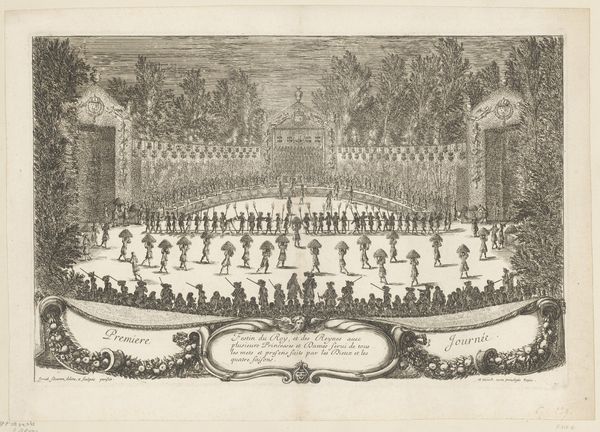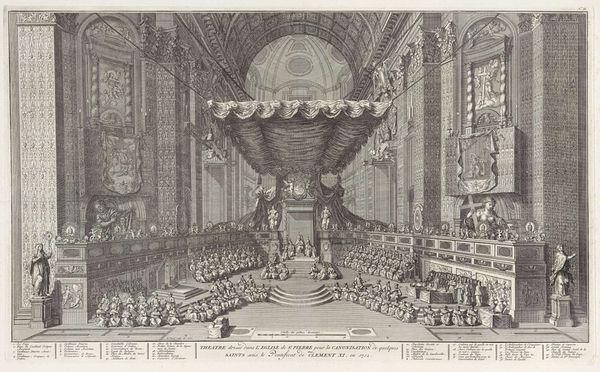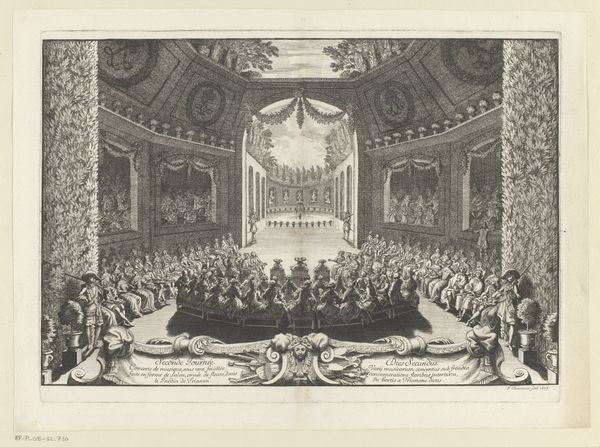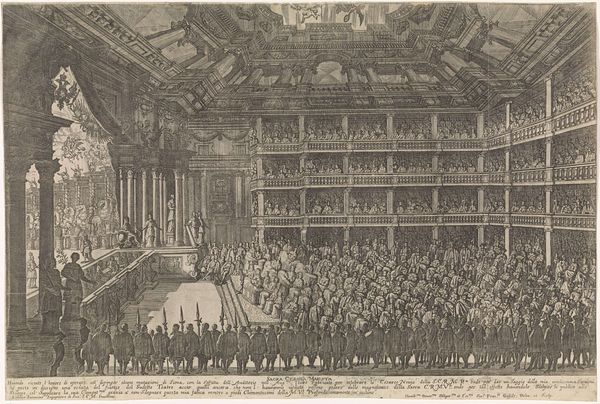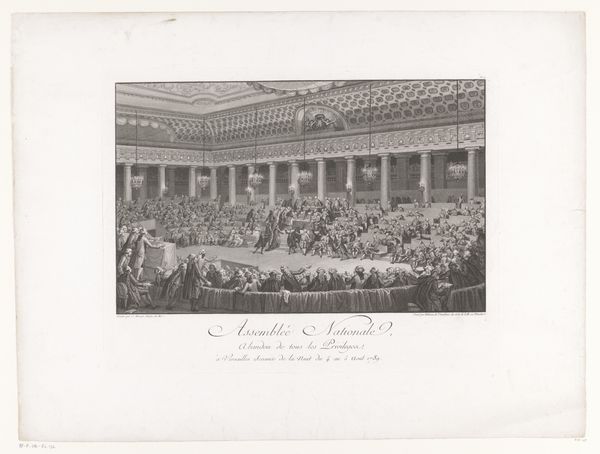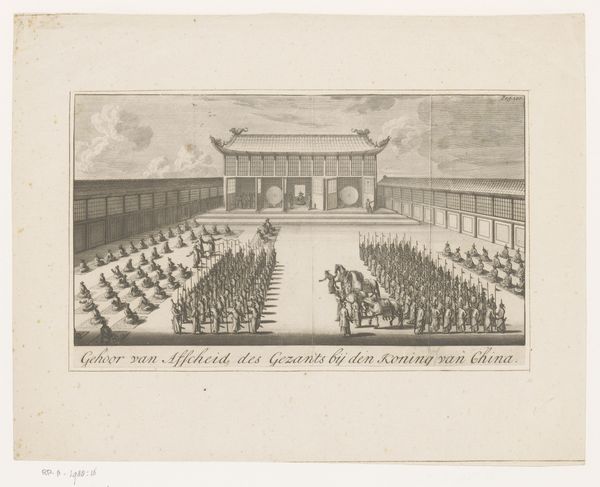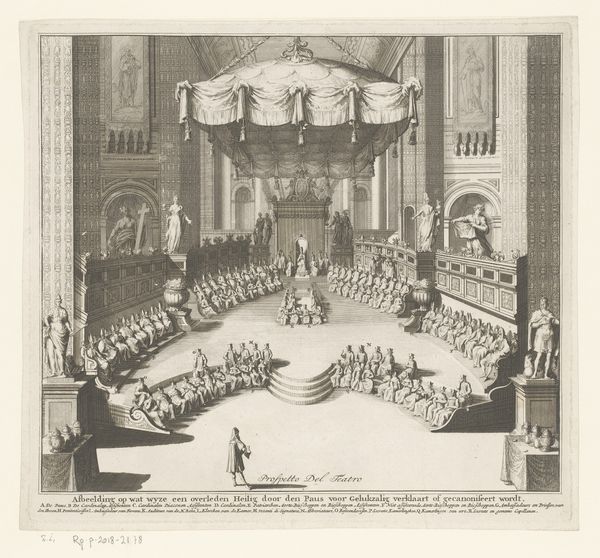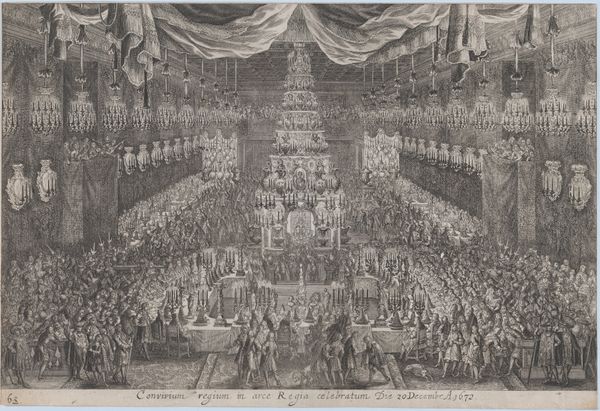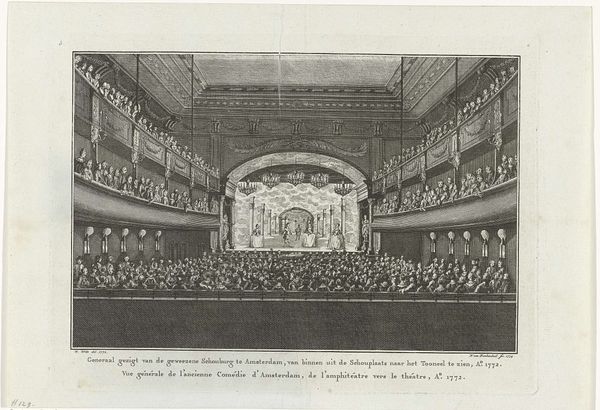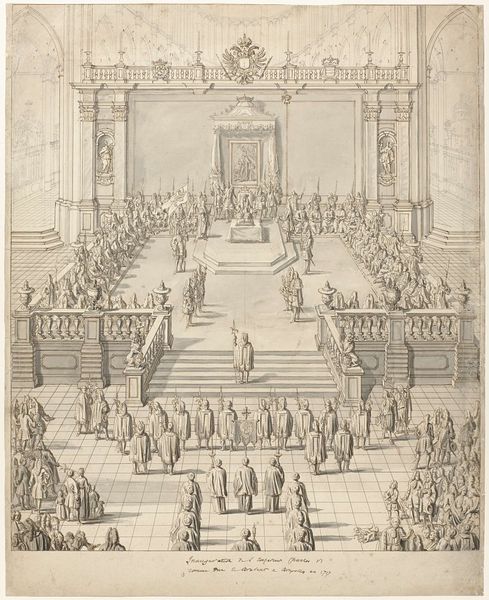
print, engraving
#
neoclacissism
#
narrative-art
# print
#
old engraving style
#
cityscape
#
history-painting
#
academic-art
#
engraving
Dimensions: height 361 mm, width 274 mm
Copyright: Rijks Museum: Open Domain
Editor: So, this engraving is titled "Opening van de Staten-Generaal te Versailles," created in 1789 by Pietro Antonio Martini. The sheer number of figures depicted is remarkable! It definitely evokes a sense of formal occasion and tradition. How do you interpret the imagery in this print? Curator: The sheer number indeed! Look closely at how Martini arranges them – serried ranks almost echoing the rigid social strata of the time. Notice how the King, beneath the baldachin, isn't bathed in light but almost receding, while the commoners surge towards us, a tide about to turn. This juxtaposition is rich with symbolic tension. It suggests the imminent shifting of power. What visual elements do you think contribute most to that sense of impending change? Editor: Perhaps the depth of field? The masses of people in the foreground almost spill out of the image. Also, there's that brilliant light source on the ceiling, directing focus to something larger than the King. Curator: Precisely! This visual symbolism highlights the "Nation," echoing the print's inscription. It acts almost like a halo around a nascent ideal. Notice, too, the seemingly classical architectural elements, repurposed to frame a revolutionary moment. Don't you think Martini uses the language of neoclassicism to legitimize a very non-classical event, an overturning of the established order? Editor: I see what you mean! The architecture is almost co-opted, transformed to carry this message of change. Curator: Exactly. And by creating a permanent image through engraving, Martini is further cementing this fleeting event in the collective memory. This wasn't just history; it was the *making* of history, carefully crafted and disseminated. Editor: That’s fascinating! I hadn't considered the act of reproduction itself as part of the message. Curator: Visual symbols are like that – layers upon layers of meaning embedded within an image and influencing how it resonates across time and culture. Every mark, every placement, tells a story.
Comments
No comments
Be the first to comment and join the conversation on the ultimate creative platform.
